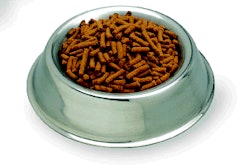In case you needed confirmation that the petfood industry is a good one to be part of, new research provides just that. According to the 2007-2008 APPMA National Pet Owners Survey, just released by the American Pet Products Manufacturers Association, the number of US households that own some kind of pet has increased by 2 million since 2004, the last time the survey was conducted.
Those 71 million pet-owning households in 2006 represent 63% of the US population, a percentage that has held steady for several years now. The households own a total of about 74.8 million dogs, 88.3 million cats, 16 million birds, 24.3 million small animals, 13.4 million reptiles, 13.8 million horses and nearly 150 million fish. Those numbers represent a slight increase for dogs (1.2%) and fish (2.2%), a slight decrease for cats (-2.4%) and birds (-3.6%) and whopping growth for small animals (33.5%) and reptiles (21.8%). (Horse ownership was not previously measured.)
Most importantly for the makers of pet products, those households spent US$38.5 billion on their pets in 2006, US$15.4 billion of that on petfood, according to the survey. Based on the increase in these numbers since 2004, APPMA projects them to reach US$40.8 billion and US$16.1 billion, respectively, by the end of this year.
Health: powerful trend
Where specifically is that growth coming from? For one thing, US owners are increasingly pampering their pets with treats; at least 69% of US pets receive them, with a full 90% of dogs enjoying them. For birds, treat usage increased from 73% in 2004 to 82% in 2006.
Judging by the number of new treats on display at the Global Pet Expoheld in February in Orlando, Florida, USA, and where APPMA first released the survey resultsmany of you are contributing to and capitalizing on that trend.
Besides food and treats, another large product category is pet health, according to the survey. This includes veterinary care, pet insurance, pharmaceuticals and over-the-counter medications, as well as specialty and functional food products: weight management foods, sports drinks, energy treats, treatments, supplements and natural and organic offerings.
In fact, APPMA cites pet health as the "most powerful trend across the industry." Pet owners can afford to feed this trend thanks partly to their healthy incomes, reported to be higher than those of the total US population. Dog owners, for example, have an average annual income of US$49,000 compared with the overall US average of US$43,000, according to the survey. The average annual income of all US pet owners is US$47,000.
Looking globally
Currently, North America owns 38% of the total global pet market of US$58.2 billion, according to Euromonitor International. (These are 2005 numbers, the most recent global figures available.) Experts expect that developed regions like the US and Western Europe will gradually lose market share to developing areas like Asia (especially China), Latin America and Central and Eastern Europe, but all will still continue to grow. And that's certainly good news.
For more information on the future of the global petfood market, watch for the May issue of Petfood Industry, which will feature a report on exclusive research we've conducted with Packaged Facts. Highlights of this research will also be presented at Petfood Forum this month (April 18) in Chicago, Illinois, USA, and at Petfood Forum Europe on May 8 in Utrecht, Netherlands. Check out www.wattnet.com/pefoodforum for details.
















